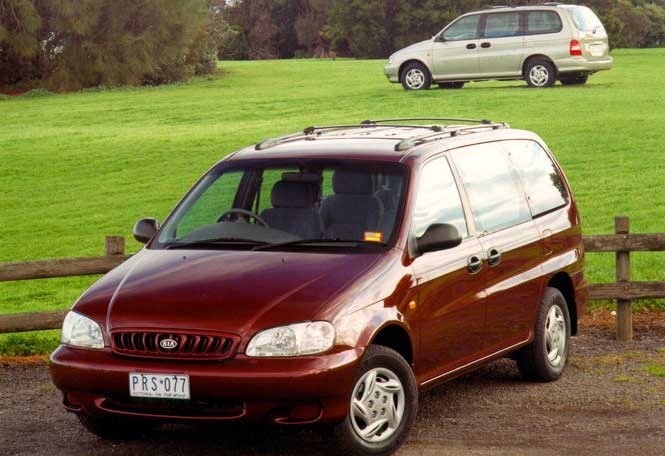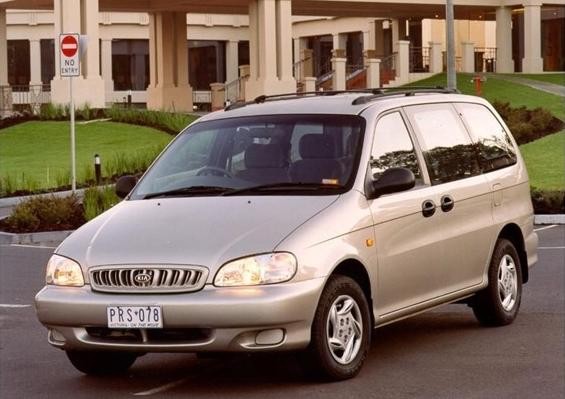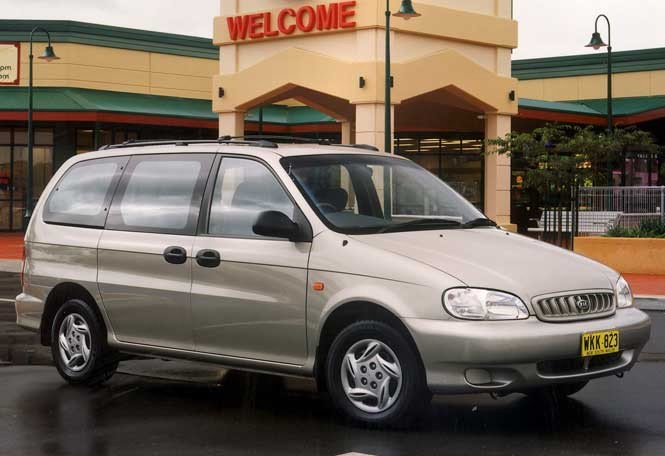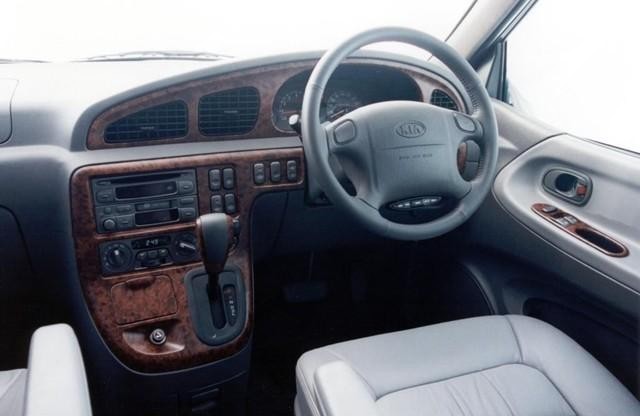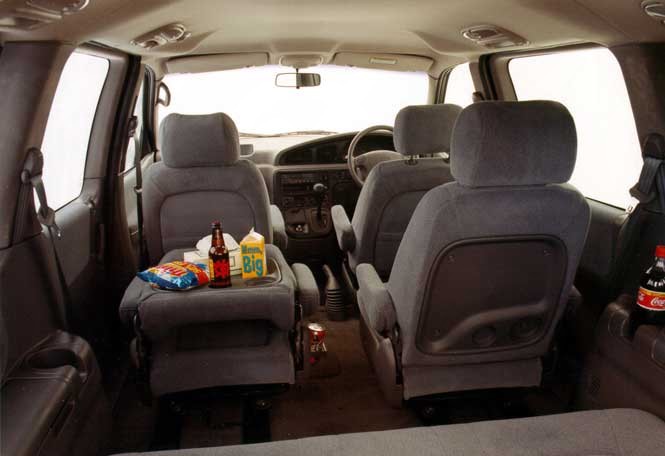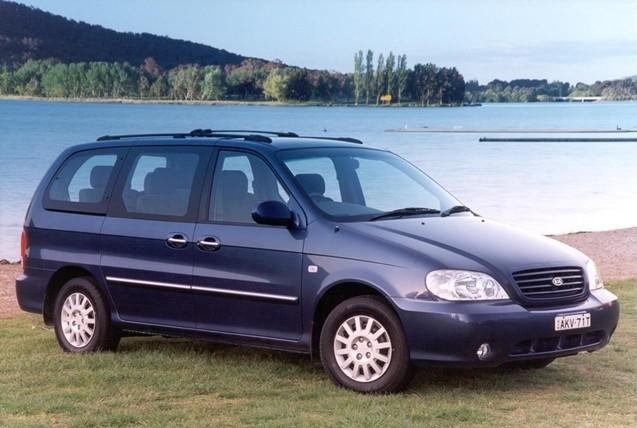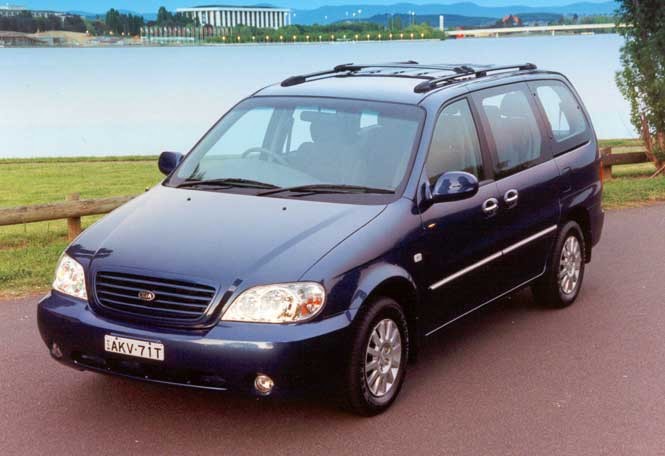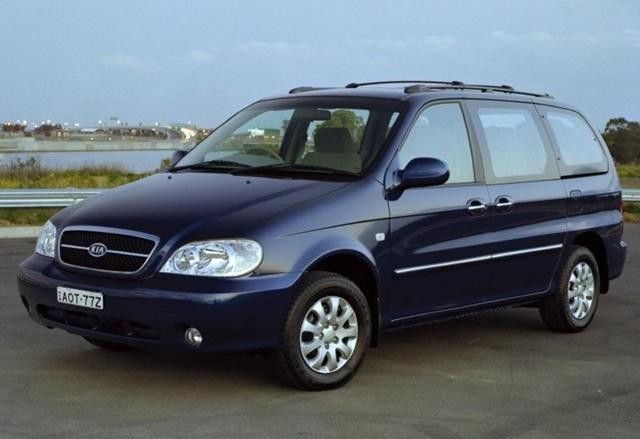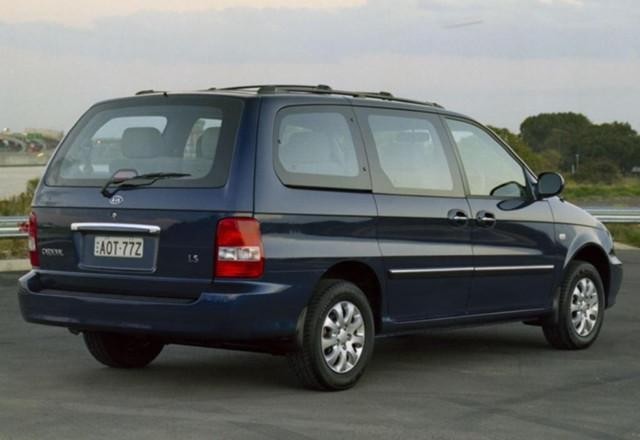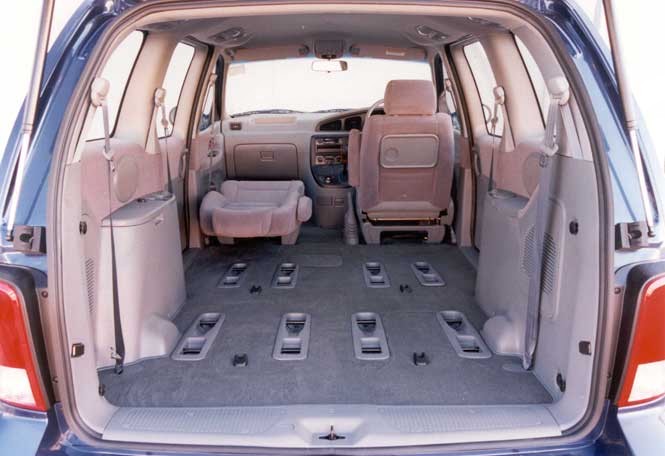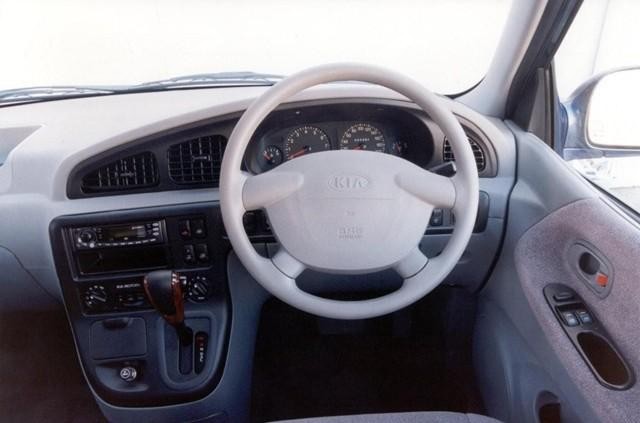
- Spacious and versatile interior
- Decent ride/handling balance
- Underpowered 2.5-litre petrol engines
- Poor fuel economy
- Lack of cabin insulation
- Large turning circle
- Fixed centre door windows
Review: Kia KV.I Carnival (1999-01)
Overview
Released in September 1999, the Kia KV Series I (KV.I) Carnival was a seven seat people mover. Manufactured in Gwangmyeong, South Korea, the front-wheel drive KV Carnival was powered by a 2.5-litre Rover K-Series V6 petrol engine that was mated to either a four-speed automatic or five-speed manual transmission. Initially, the Carnival range consisted of a single, unnamed variant; from September 2000, however, this was renamed ‘LS’. Limited-run Classic and LE variants were released in October 2000 and September 2001, respectively.
KV6 engine
The 2.5-litre KV6 petrol engine had an alloy cylinder head and block, double overhead camshafts, four valves per cylinder and a compression ratio of 10.4:1. Engines in models manufactured before March 2002, however, were prone to gasket failures that enabled water to enter the cylinders. As a result, Kia had to replace the affected engines.
Dimensions and suspension
The Carnival was 4890 mm long, 1895 mm wide, 1790 mm wide and had a 2910 mm long wheelbase. Furthermore, the Carnival had MacPherson strut front suspension and five-link rear suspension with coil springs.
| Variant | Years | Engine | Trans. | Peak power | Peak torque |
|---|---|---|---|---|---|
| [Unnamed] | 1999 | 2.5-litre petrol V6 | 4sp auto, 5sp man. |
132 kW at 6000 rpm | 220 Nm at 4000 rpm |
| LS | 2000-01 | ||||
| Classic | 2000 | ||||
| LE | 2001 |
Safety equipment
For the unnamed variants, only automatic models were fitted with a driver’s airbag. From 2000, a driver’s airbag was standard and the Classic variants were also fitted with a front passenger airbag.
Euro NCAP crash testing
In Euro NCAP crash testing , a 2003 Carnival with a 2.9-litre diesel engine – and fitted with dual front airbags – received a two star adult occupant protection rating with a score of 18. In the frontal offset impact test, the Carnival’s body was badly damaged and became unstable – the driver’s head and chest hit the steering wheel, the footwell ruptured and the pedals were pushed backwards by the impact. As such, little if any protection was provided to the driver’s chest, legs and feet. In the side impact test, the driver’s head hit the door pillar.
Features: Carnival, LS, Classic and LE
Standard features for the Carnival included a six speaker sound system, dual zone climate control air conditioning, central locking, power front windows, power door mirrors with heating, tilt adjustable steering column, sliding rear doors, roof racks and tinted glass; automatic models were also fitted with a CD player. From 2000, the Carnival LS was further equipped with a CD player and immobiliser.
Beyond this, the Classic and LE variants were also fitted with 15-inch alloy wheels, leather seats and a power adjustable driver’s seat.
Review: Kia KV.II Carnival (2001-06)
Overview
Released in December 2001, the KV Series II (KV.II) Carnival introduced greater refinement, interior flexibility and a subtle facelift. Visually, the KV.II Carnival could be identified by its new bonnet, grille, clear-finish headlights, bumper and front fog lights.
| Variant | Years | Engine | Trans. | Peak power | Peak torque |
|---|---|---|---|---|---|
| LS | 2001-06 | 2.5-litre petrol V6 | 4sp auto, 5sp man. |
132 kW at 6000 rpm | 220 Nm at 4000 rpm |
| Australian Open | 2004 | ||||
| LE | 2001-02 |
Features
Inside, the re-designed second and third row seats could now slide fore and aft, while the two centre seats and split rear seat could be removed individually; there was also an additional 12 volt power outlet and extended interior lighting.
October 2003: Carnival update
In October 2003, the LE variant was discontinued and the LS variant was fitted with remote central locking and rear disc brakes (previously drums).
2004 Australian Open Carnival
In February 2004, a limited-run Australian Open variant was released. Compared to the LS variant, the Australian Open was further equipped with ABS and features were extended to include alloy wheels, a CD player, climate control air conditioning, leather upholstery and power folding mirrors. Visually, the Australian Open variants could be identified by the two-tone finish for the exterior paint finish; inside, there was a metallic finish for the dashboard.
Related links
